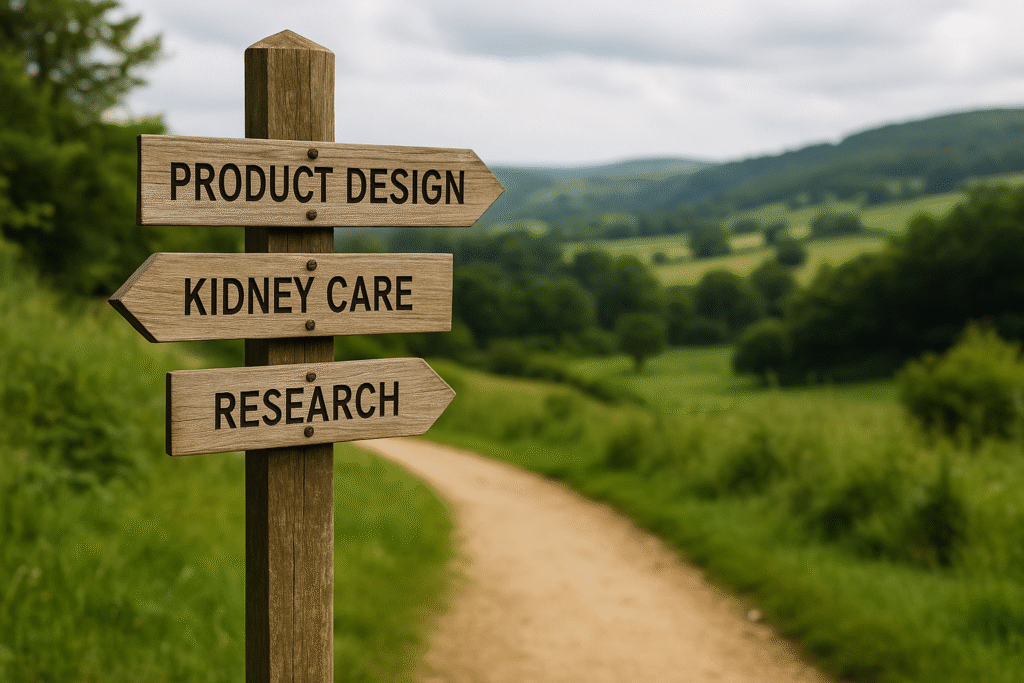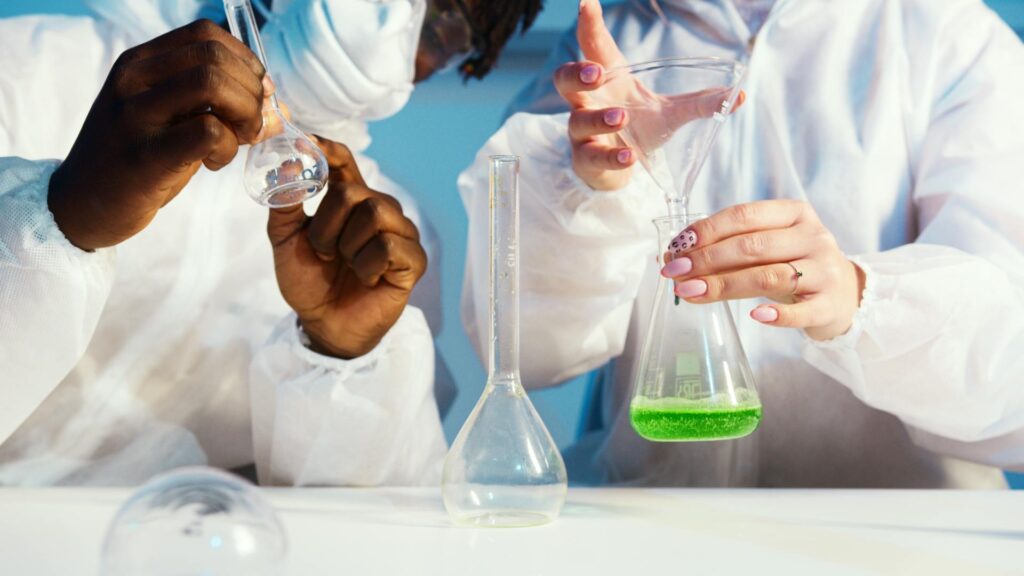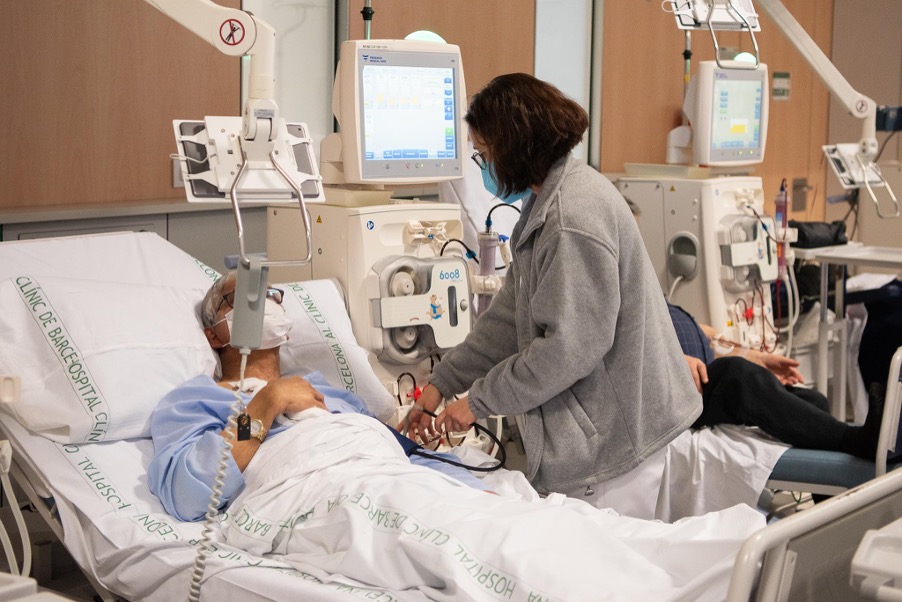
James Larkin’s journey in greener kidney care: an unexpected path to innovation (Part 1)

Kidney dialysis is a life-saving treatment, but it comes with a hefty environmental price tag. From energy-hungry machines to mountains of single-use plastic waste, the carbon footprint of kidney care is alarmingly large . In fact, healthcare overall contributes an estimated 5–11% of global carbon emissions. Recognising this, KitNewCare was launched, a Horizon-funded project pioneering sustainable solutions in kidney healthcare. At the forefront of this effort is James Larkin, a doctoral researcher at Trinity College Dublin, who has made it his mission to make dialysis greener.
What makes Larkin’s story especially compelling is his unconventional background. Trained in product design, not medicine, he entered the nephrology world almost by chance. “I don’t have a background in nephrology or kidney care,” Larkin says, smiling. “That was a huge step for me to learn all this and gain the knowledge. At the start, you’re kind of expected to be an expert, and I didn’t have that knowledge.” Despite initial challenges, his fresh perspective is proving to be an asset in rethinking how dialysis can be done more sustainably.
In an in-depth interview, Larkin shares his journey into kidney care research, the scientific insights he’s uncovered, from eco-friendly dialysis innovations to novel waste management, and his hopes for the future.
From product design to kidney care research
Just two years ago, James Larkin never imagined he’d be discussing dialysate, dialysers, and life cycle assessments of medical treatments. “I actually found this project while I was job hunting,” he recalls. “I went on Indeed, and Trinity was hiring a PhD researcher in kidney care. I was like, oh, that would be cool. I applied and got it. It wasn’t the most intentional path, but I’m here now and I really like it,” Larkin says with a laugh.
Stepping into a highly specialised medical field without a clinical background was daunting.
In the beginning, Larkin often felt like an outsider learning a new language. He had to absorb nephrology concepts quickly, from the physiology of dialysis to the jargon of sustainability metrics. “It’s been a lot of learning for me,” he says. “Because I came from outside healthcare, there was a huge amount to catch up on. I’d get asked questions at the start and find it quite hard, because people expect you to be an expert.” Yet this crash-course in kidney care became a driving force for Larkin. It pushed him to dive deep into the subject matter and collaborate closely with clinical mentors and fellow researchers.
Early on, Larkin also faced the practical challenges of interdisciplinary research. He needed to gather massive amounts of data about dialysis processes, supply chains, and energy usage. “Trying to gather all this data on all the products, the energy of a hospital, etc., and then putting it all together was really tough,” he admits. Working within an international consortium added complexity: “We work with lots of great people, but it’s just trying to keep it all organised and in sync,” Larkin says. Despite these hurdles, he persisted, driven by a belief that healthcare can change for the better. “One of the objectives of KitNewCare is to let all fields know that there is another way to be more sustainable, and to show the impact that healthcare has on sustainability,” Larkin emphasises, echoing the ethos that guides his project.
Measuring dialysis’s footprint: life cycle assessments
Once on board the KitNewCare project, Larkin’s first major task was to quantify the environmental impact of dialysis treatments. He embarked on detailed life cycle assessments (LCAs) of both hemodialysis (HD) typically done in-centre with machines filtering the blood three times a week, and peritoneal dialysis (PD) often done at home using fluid exchanges in the abdomen. “The first couple of months we were mapping all the processes for both treatments, gathering all the data and running life cycle assessments on them,” Larkin explains. This meant accounting for everything: the production and transport of dialysis fluids and equipment, the electricity and water used during treatment, patient travel to clinics, and disposal of medical waste. By tracing these processes from cradle to grave, Larkin could pinpoint where the biggest environmental burdens lie.
The initial findings were eye-opening. Patient transportation emerged as a surprisingly large contributor to dialysis’s carbon footprint. “Patient transport is definitely very problematic, it’s toxic, really,” Larkin notes, referring to the carbon emissions from thousands of trips to and from dialysis clinics. In hemodialysis, patients often travel to the hospital three times a week for treatment, so the emissions add up quickly. In fact, a recent study confirmed that the transport of patients (and staff) is one of the largest and most variable sources of greenhouse gases in HD treatment. Larkin’s work reinforces that reducing or optimising patient travel, for example, via more home therapies or telemedicine check-ups, could significantly cut emissions.
Another culprit is the transport of medical supplies and equipment. Dialysis relies on a steady flow of consumables: fluid canisters, plastic tubing, filters, needles, and more. “Product transport is also very impactful,” Larkin says. “Dialysis products are being shipped from all over the world, and a lot of products are used in these treatments.” This resonated with Larkin’s design sensibility, it’s a logistics and packaging problem begging for innovation. He began considering solutions like using more localised production of supplies, bulk shipping methods, or alternative materials to replace plastics like PVC (a common plastic in dialysis kits that is harmful to the environment when incinerated). “Maybe there’s a way to use bioplastic or bio-based materials,” he muses. “It’s easy to say and obviously there’s a reason they don’t use it yet, but it’s something to look at, to find an option that’s actually feasible.”
Energy use, particularly electricity for running dialysis machines and treating water, is another major piece of the footprint puzzle. A single in-centre hemodialysis session can consume significant power and water for purification. Larkin’s LCA work tallied these inputs as well, helping to highlight the importance of energy efficiency and possibly renewable energy sourcing in dialysis centres. By the end of this LCA phase, Larkin had authored multiple research papers detailing the pathways and impacts of kidney care. “I wrote a paper on peritoneal dialysis pathways and procedures, and a paper on peritoneal dialysis products,” he says. Together with his supervisor and colleagues, he compiled a clear picture of where dialysis is unsustainable, and where interventions could make the biggest difference.
Hemodialysis vs peritoneal dialysis: surprising insights
One advantage of studying two different dialysis modalities side-by-side is the ability to compare their environmental profiles. Larkin looked closely at automated peritoneal dialysis (APD), which uses a machine to perform exchanges overnight, versus continuous ambulatory peritoneal dialysis (CAPD), where patients manually do fluid exchanges by gravity several times a day. His analysis revealed a trade-off between environmental impact and patient lifestyle. “It was interesting to see that the environmental impact of APD was higher than CAPD,” Larkin says. The machine-assisted APD consumes electricity and involves additional equipment (like tubing sets for the cycler device each night), which raises its carbon footprint. CAPD, done by hand, uses fewer resources per treatment.
However, APD has quality-of-life benefits. “APD is better from an experience perspective. You’re not really aware of the dialysis going on during the night, and it’s a machine doing the work,” Larkin explains. By contrast, CAPD requires patients to stop their activities and spend about 45 minutes performing an exchange, four times a day. This insight underscores a key theme in sustainable healthcare: environmental best practice must be balanced with patient-centric care. A treatment that is greener on paper might not be acceptable if it significantly burdens patients. The goal, Larkin notes, is finding a sweet spot where both patient well-being and sustainability improve.
Another intriguing concept Larkin investigated is incremental dialysis, an approach to start dialysis more gradually for patients with some remaining kidney function. Instead of jumping straight into a full schedule (e.g. PD every day or HD three times a week), the dialysis frequency is ramped up over time. “Incremental dialysis is huge for carbon savings because you’re using way less products,” Larkin says. By dialling back the number of sessions initially, hospitals can reduce consumable use and waste. But importantly, this isn’t just about carbon accounting, it may benefit patients medically and socially. “In terms of health outcomes, it actually looks better if you can start with an incremental approach for a period of time before needing full dialysis. It’s better for you,” Larkin adds. Indeed, incremental dialysis can preserve residual kidney function longer and ease patients into life on dialysis. Larkin’s findings suggest that, where clinically appropriate, an incremental start not only cuts environmental impact but also aligns with good patient care. It’s a win-win idea that he hopes will gain traction among nephrologists.
As we’ve explored James Larkin’s unconventional entry into kidney care and the initial insights from his rigorous environmental assessments, our next article will highlight the innovations he’s championing. Stay tuned for Part 2, where we delve into transformative solutions such as locally produced dialysate, advanced waste management technologies, and emerging AI-driven tools, all aiming to redefine the sustainability landscape of kidney care.

Save the date: Innovation Challenge 2 to accelerate sustainable kidney care across Europe

Green kidneys: solving nephrology’s climate paradox

